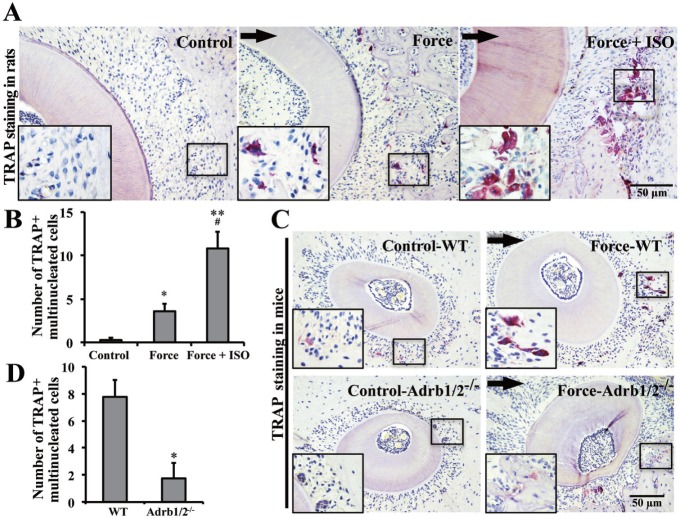Figure 5.
Orthodontic force-induced osteoclast differentiation partially depends on β-2 adrenergic receptor (Adrb2). (A) Tartrate-resistant acid phosphatase (TRAP) staining for osteoclasts in rats with orthodontic force application for 7 d. Arrows indicate the direction of tooth movement. Large boxed areas show higher-magnification views of the small boxes. (B) Semiquantification of TRAP+ multinucleated cells. The Force + ISO group presented the highest number of TRAP-positive multinucleated osteoclasts, followed by the Force and control groups. n = 5. * p < .05 vs. the control group. ** p < .01 vs. the control group. # p < .05 vs. Force group. (C) TRAP staining for osteoclasts in mice with orthodontic force application for 7 d. (D) Semiquantification of TRAP+ multinucleated cells. Orthodontic force-induced osteoclast formation was decreased in the Adrb1/2-/- group compared with that in the wild-type group. n = 5. * p < .05.

